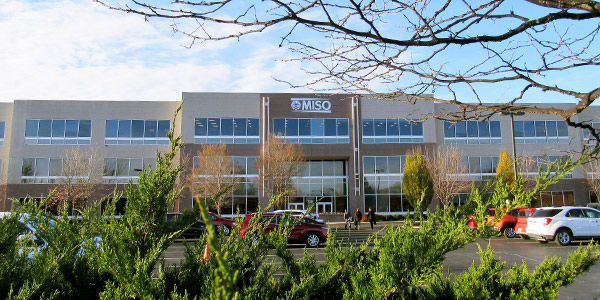MISO said its members collectively saved about $3.5 billion in 2020 for choosing RTO membership over going it alone on the grid.
The grid operator’s 2020 value proposition study showed that it provided between $3.1 billion and $3.9 billion in regional benefits. The annual value proposition study compares utility benefits of RTO membership versus flying solo.
MISO chalked the savings up to improved reliability, more efficient use of the region’s existing assets and reduced need for new assets.
Despite the pandemic, the cost reductions didn’t change much from a year earlier, when MISO said it saved members between $3.2 billion and $4 billion. For the past four years, the grid operator has claimed annual cost savings between $3 billion and $4 billion. (See MISO Estimates up to $4B in 2019 Benefits.)
Spokesperson Brandon Morris said the pandemic didn’t affect value proposition results because MISO was able to consistently maintain normal reliability and operations functions.
“Our member utilities’ shared commitment to serving the footprint reliably — combined with relatively stable year-over-year load levels as compared to 2019 — resulted in a 2020 value proposition which was largely shielded from the devastating impacts of COVID-19,” Morris told RTO Insider.
“The value proposition has been relatively stable for the past few years at about $3.5 billion,” Strategy and Business Development Adviser Brad Decker told stakeholders at a teleconference Feb. 19 to discuss the savings.
MISO has documented more than $30 billion in benefits to its members since 2009. “This benefit has grown as MISO has grown,” Decker said.
Broken down, MISO estimated it has saved members between $384 million and $447 million because of its ability to offer improved reliability and perform compliance tasks on behalf of its members.
The RTO said members also avoided spending another $517 million to $572 million because it dispatches existing assets efficiently and offers energy regulation and spinning reserves.
“Before MISO, the region operated as a decentralized, bilateral market,” Decker said. “Now, the day-ahead and real-time market processes are used to minimize total production costs.”
But MISO said its most attractive benefit is its members’ diminished need to build new generating assets, worth between $2.47 million to $3.22 million in savings.
The grid operator said its footprint diversity accounted for about $1.9 billion to $2.4 billion of that reduced need for assets. Decker said the RTO’s geographic expanse means load can rely on other generation assets because weather and demand fluctuate by region.
“If you shared a car with your neighbors, you have fewer cars in garages, and that’s exactly what’s happening under footprint diversity,” Decker said.
Other drivers of the reduced generation need were MISO’s efforts to better incorporate wind into the resource mix, which it valued at a $450-$517 million savings to members, and its demand response programs, which it valued at $116-$211 million.
“MISO’s regional planning enables more economic placement of wind resources, reducing the overall capacity needed to meet required wind energy output,” Decker said.





